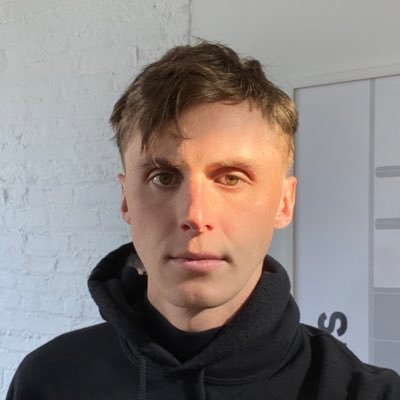1kx: Exploring the Design Space of Dynamic NFTs
Original Title: Exploring the Design Space for Dynamic NFTs
Original Author: Nichanan Kesonpat, 1kx
Original Compilation: Deep Tide TechFlow

Today, most NFTs are static assets. Their media and metadata immutability is enforced either by social protocols or through code. While this is sufficient for storing cultural artifacts designed to be immutable (static art, music, writing, collectibles), there remains a vast experimental design space for dynamic on-chain assets that can continuously evolve in appearance, metadata, or state according to immutable rules.
Dynamism allows NFTs to transcend static links and media, behaving more like software that responds to external factors. This creates new layers of interaction for digital goods and media, supporting greater individual and collective expression, dynamic utility, and ongoing innovation around digital objects.
Dynamic NFTs can be programmatic (reflecting algorithmic inputs) or interactive (reflecting user inputs). Depending on the intended use case, dynamism can span multiple verticals.
We have already seen various experiments targeting fields such as art, gaming, identity and reputation, the metaverse, and community and brand engagement.

Performance or Concept Art
Dynamic collections can be seen as a subset of generative art, which also includes "parameter input" multi-user art, where minting time or minter address is treated as a source, but the NFT itself does not update after minting. Dynamic art NFTs provide collectors with a continuous sense of surprise and serve as a multi-user creation tool between artists and collectors, acting as a new medium for collective storytelling.
Art that automatically evolves over time, lunar phases, on-chain states, or off-chain conditions, such as Alexis Andre's 720 Minutes, crashblossom's BURNER, Takens Theorem's Gaussian Timepieces, Ed Forneiles' Finiliars, Matt Kane's Gazers, and Harm van den Dorpel's Mutant Garden Seeder.
Art that evolves with transfer chains and ownership, such as Animal Coloring Book, dom.eth's Corruptions, Joan Heemskerk's Chameleon, Entropes, OG Crystals, and Watchfaces by w1nter.eth and Tyler Anglert.
Art where collectors can directly influence visual effects, such as divergence's Brotchain, Mathcastles' Terraforms, John Palmer's Shields, Async Art's Forever Supper or Classic, where collectors can change the layers displayed in the main artwork.
Art with style options that are released periodically, with each release offering new limited edition styles, allowing holders to "transform" their NFTs, such as Opepen.
Real-time generated, non-repeating audio-visual art, such as 404.eth's In Noise We Trust and various works by DEAFBEEF.


Gaming
In addition to serving as upgradable assets in games, dynamic NFTs can act as a canvas for gameplay, reflecting game states in their media and metadata. Combined with digital physical goods, NFTs can be updated based on IRL events to unlock new consumer experiences.
Axies that win ranked battles earn Axie-bound experience points (AXP), which can be used to "level up" Axies. This synchronizes off-chain game progress to on-chain, raising the level cap of Axies and allowing players to upgrade Axie components.
Citadel ships can be upgraded to increase power, speed, and fuel efficiency. Each upgrade requires different amounts of time and raw materials (ores) to complete. Part of the gameplay involves pilots planning trips to asteroid belts to mine ores, with every action and game state reflected on-chain.
"Actions" are on-chain transactions that affect the world, such as Straylight.
Battle arenas where gameplay leaves a mark on the media, such as Chainfaces Arena.
Viral propagation/distribution mechanisms for spreading infections, such as FoliaVirus and Viper.
Collection, breeding, and merging mechanisms to produce rarer versions, such as Avastars and VV Checks.
Placement games using on-chain AI, where collectors can seek the highest-scoring NFTs, such as Miragenesi's ArcadeGlyphs.
IRL games and physical activity upgrade NFTs, such as STEPN and Loot LARP.
Avatar rarity hunting and community engagement, such as Manny's game.
NFTs that consume, infect, and enhance each other to become stronger, such as Etholvants and Booster Syringes, Viper.

Identity and Reputation
Dynamic NFTs can also represent certain identities and associated reputations within a community, evolving with ongoing contributions and governance activities. This fosters intentional interactions within and between communities and lays the groundwork for building social games.
On-chain activities across applications directly influence NFT characteristics, such as Zerion DNA.
Lens v2 includes plug-and-play support for token-bound (ERC-6551) standards, providing each Lens Profiles NFT with its own smart account. This decouples profiles from their holders, allowing the NFT itself to accumulate access, assets, and reputation.
Burak Arikan's Social Contracts track collectors' collections and their shared connections with other collectors, generating collection graphs to predict future acquisitions.
JPG Canonons artworks represent unique, cumulative expressions of individual participation in Canons curation. Similarly, Deca Decagons can be upgraded by consuming Deca experience points (DXP) earned by completing daily tasks on the platform.
Mercle and The Metagame can gamify and unlock features based on individual behavior and roles within the community.


Metaverse
Holders can directly influence and overlay on-chain media land, such as Mathcastles' Terraforms.
Land evolves as holders and visitors interact through art curation, such as MOCA ROOMS, or as land evolves through plot construction and game interactions, such as Upstreet, Hyperfy, Otherdeeds, and Voxels.
Virtual fashion NFTs that can switch between 3D wearables and artworks, such as RSTLSS.

Community and Brand Engagement
Major brands have attempted to engage mainstream audiences using dynamic NFTs, connecting assets with external data or increasing utility through ongoing activities.
DeGods reveals new artworks and features for its PFP collection each season. Holders spend $DUST to upgrade their NFTs and can choose which metadata to display. Staking DeGods accumulates more $DUST for holders and accumulates DePoints for the staked NFTs. DePoints can be spent in-game to open packs containing $DUST or brand-sponsored rewards, with the DeGods that earn the most points in the current season entering a leaderboard.
LaMelo Ball collectible athlete cards have "upgrade" features based on real basketball data (such as Rookie of the Year announcements). As the player's career progresses, the collectibles will evolve, dynamically integrating with statistics and milestones.
Adidas ATLS is a PFP in the Adidas Into the Metaverse series. Over time, new features will be gradually revealed to the token as part of an interactive storyline.
Lacoste UNDW3 tracks community engagement through conversations, gamification, task-solving, and co-creation.

What Are Dynamic NFTs Changing?
Content
NFTs that render media solely from on-chain data automatically evolve based on parameters such as time, block hashes, and wallet addresses, which deterministically affect the artwork. Besides the typically required custom implementations for on-chain art and games for each collectible, NFTs that reflect on-chain states can serve as memorial or "receipt" NFTs representing DeFi positions (Uni v3 Positions, Web3 savings cards), governance rights (PartyDAO membership cards, Juicebox cards), or community membership cards that accumulate certain reputations (JPG Canonicons, Deca).
Tokenizing protocol positions into NFTs makes these positions themselves tradable assets, transforming them into the foundation for new products and services. For example, Metastreet deposits third-party NFT acceptance certificates into a collateral pool for its automated bond manufacturing protocol.
Allowing media to reflect real-time contract states enables end users of wallets and markets to read contract statuses. SVG framework code is deployed once as part of the NFT contract, while the rest of the image is programmatically updated using on-chain data.

Metadata
Gaming projects seem naturally suited for variable metadata, as players can evolve or enhance assets through gameplay. Executing this as NFTs offers advantages over virtual projects in centralized servers, as metadata can be tracked and stored on decentralized infrastructure, preserving game records during project transactions.
Supply
Minting and burning mechanisms that elevate sub-assets to higher "levels" can produce new assets that can only be derived from certain lower-level combinations (e.g., VV Checks) or inherit parent characteristics (e.g., CryptoKitties, Avastars).
Neolastics and Clovers are generative art projects that introduce dynamic supply and autonomous economies for collectibles. For Neolastics, anyone can mint new tokens and inflate the subsequent minting price according to a game curve. 99.5% of each minting cost goes into a community reserve, serving as a predictable floor price and quasi-buyer when anyone chooses to burn their Neolastic.
In Citadel, new ships enter the game through a weekly sealed bidding (blind auction) Dutch auction system. Players risk ship damage for greater rewards as they venture into more dangerous areas of the game. The inflation rate is within a narrow range of the number of new ships offered in the auction, while ship damage tends to burn based on a percentage of total supply. As total supply increases, the total amount of ship burn will increase until it balances with the new ships introduced in the auction.
On-chain Features
Some interesting games can be designed where certain abilities or functions on NFT contracts remain dormant until specific conditions are met. For example, a dynamic collectible, whose supply is initially reduced by merging two tokens, could include a function called "birth" that can only be called after the NFT reaches a certain size (reflected in the contract state) through merging. The codes of the merged tokens and the parent token ID can serve as seeds for deterministic renderers to create infinite visually distinct rounds, such as VV Checks.
NFTs can also be modified for a period before they are "locked" and become immutable.
How Creators Make Dynamic NFTs?
Dynamic Art Platforms
Async Art and OG Protocol introduce new mechanisms such as master/layer NFTs and metadata update pipelines, specifically designed to help artists launch multi-user collections and dynamic NFT projects.
Transient Labs has been leading experiments in interactive and updatable media art. In ERC-721TL, they outline a method that allows both creators and collectors to voice opinions on metadata updates, enabling collectors to approve or reject any proposed metadata changes from artists. The standard also provides story inscriptions, allowing creators and collectors to leave their narratives, exhibition sources, and sales histories on artworks by appending on-chain text to the NFT. Michelle Viljoen's Hidden Stories is an example.
Oracles, Decentralized Cloud Functions, and Dedicated Middleware
These can feed off-chain data to smart contracts, enabling NFTs to respond to off-chain events. For more complex interactions, such as user-generated content in virtual land, NFTs represent world coordinates and write access permissions. However, the content itself is typically processed and stored on hosted servers, with tokens referencing it in their metadata.
Chainlink data sources can relay information such as crypto prices and weather, allowing NFTs to "become aware of their environment." Through their integration with Space&Time, developers can execute a script that pushes this data on-chain via Chainlink functions.
Using Gelato Web3 functions or Lit actions, developers can write any logic to conditionally update NFTs based on off-chain events or specific intervals. Gelato nodes continuously run functions that can trigger metadata changes if specific conditions are met. Similarly, Lit actions execute on Lit's threshold cryptography network, where each node independently verifies results and automatically signs transactions for on-chain updates when a 2/3 threshold is reached. For example, fetching real-time game data from sports APIs and upgrading player skills as they win.
Mentaport provides an SDK for "location-aware" smart contracts, supporting time and location-based functionality access, minting, and dynamic updates, which is useful for time-limited IRL events and proof of access mechanisms.
Integrated NFT Management Platforms
Sparkblox, Evalon, and Metafuse provide integrated solutions for launching and managing interactive NFT collections, allowing holders to interact with assets or dynamic NFTs that evolve based on real-world data and connected APIs.
Kairos offers a GraphQL API for programmatically creating, minting, and selling NFTs, optionally with updatable metadata, as well as developer tools for dynamic NFTs with metadata and images stored on Kairos servers.
Paima allows game developers to create stateful NFTs that can be upgraded, gain experience, and evolve over time. Paima's NFT compression protocol mints a minimal set of NFTs on L1 and evolves them based on game states on L2.
Lync provides game developers with out-of-the-box tools to integrate web3, including cross-chain wallet SDKs, marketplace SDKs, and NFT management tools, where updates to game assets can be triggered automatically using Chainlink.
Syndicate's metadata API offers creators options for storing NFT metadata and bulk updating collection traits.
Decentralized Metadata Registries
Playground is building infrastructure to connect brands to existing NFT communities by publishing traits to collections. By pointing the collection's tokenURI to Playground's metadata registry, collection managers can choose to make their collections eligible to receive traits for their NFTs, offering holders exclusive rewards and discounts.
Standards and On-Chain Primitives
EIP-4906: The metadata update extension provides a standard MetadataUpdate event to facilitate third-party platforms in updating NFT metadata. OpenSea supports this, making it very suitable for NFTs updated through contract calls, but it is not feasible if the changes are recursive.
Transient Labs' ERC-721TL provides a method for creators and collectors to append on-chain text to NFTs (Story Inscriptions), in addition to optimizing implementations for bulk minting and airdrops, it also offers a proposal mechanism for metadata updates (Synergy).
EIP-721k: Dynamic on-chain images and metadata use composable on-chain SVG modules and data streams to build, render, and evolve NFTs. NFTs encode dynamic instructions that are relayed to SVG elements and data stream modules. The SVG rendering engine builds sub-elements using a public registry, constructing SVG by encoding/decoding inputs from multiple external smart contract sources in real-time. This allows NFTs to be updated and improved incrementally. When NFTs achieve product-market fit, it will be easy to introduce expansion packs and other game features. This can be seen in practical applications in Web3 savings cards and Pixel Pooly.
EIP-7496 defines methods for setting and retrieving dynamic on-chain traits associated with NFTs. By defining these traits on-chain and standardizing how to change them, they can be used and modified by other contracts.
EIP-6551: This year's token-bound accounts have received much attention; although it does not address the dynamism of NFTs themselves, it allows NFTs to hold other assets and become their own on-chain identities. Token-bound accounts are out-of-the-box compatible with any NFT collection. Any smart account implementation can be deployed to NFTs and start holding assets.
RMRK proposes a standard set for multi-asset, nested, composable, emotional, and soul-bound NFTs.
Merklejerk's zipped-contracts is a great trick for cheaply deploying contracts that always call off-chain in the eth_call context. The contracts are compressed off-chain, and at runtime, the contract decompresses the zipped contract, deploys it, and forwards the original call to the deployed instance. The result bubbles up in the revert() payload to undo the deployment and avoid permanent state modifications. This method saves about 50% gas, which is useful for text-heavy primitives like composable SVG metadata.
w1nter.eth's hot-chain-svg is a toolkit for building on-chain SVG projects, featuring a simple rendering engine and hot reloading for developers to quickly perform visual NFT content quality assurance.
On-chain fonts and design systems are building blocks for deploying and then composing more complex on-chain media, although it may take some time before we see enough of these deployments to provide creators with a good range of options.
Conclusion
Dynamic NFTs represent an exciting form factor for digital objects that transcends categories. Although the supporting infrastructure is still immature, the ecosystem has been actively innovating technologies to bring generative media and metadata on-chain and build composable primitives that can be reused by other projects.
Early dynamic NFT projects required deep technical skills and custom implementations. However, as middleware and creator tools become more powerful, we expect dynamic NFTs to become as ubiquitous as "regular" NFTs themselves, serving a wide variety of use cases. Some open questions…
How will frontends like marketplaces, portfolio trackers, and wallets add support for real-time evolving NFTs?
How can we improve the decentralization of solutions that render or run generative code?
How do publishers and collectors manage the permissions and scope of changes that can be made to specific NFTs?
How universal is the dynamic NFT infrastructure? Current minting engines and store builders can provide unbiased tools to launch collectibles across media formats. But as dynamism varies more in different contexts, what will dynamic modules look like?
The rise of NFTs can be said to not be the ERC721 itself, but rather the rapid rise of CryptoKitties, which became a successful market push for the standard. Even before Ethereum itself, Colored Coins, Quantum, and Counterparty NFTs showed that mere technological innovation is not enough to trigger widespread experimentation on top of that technology. Instead, it is the versatility, strong community dissemination, and killer applications that turn the standard into a Schelling point for builders in the coming years.
For dynamic NFTs, the technology and use cases already exist.












